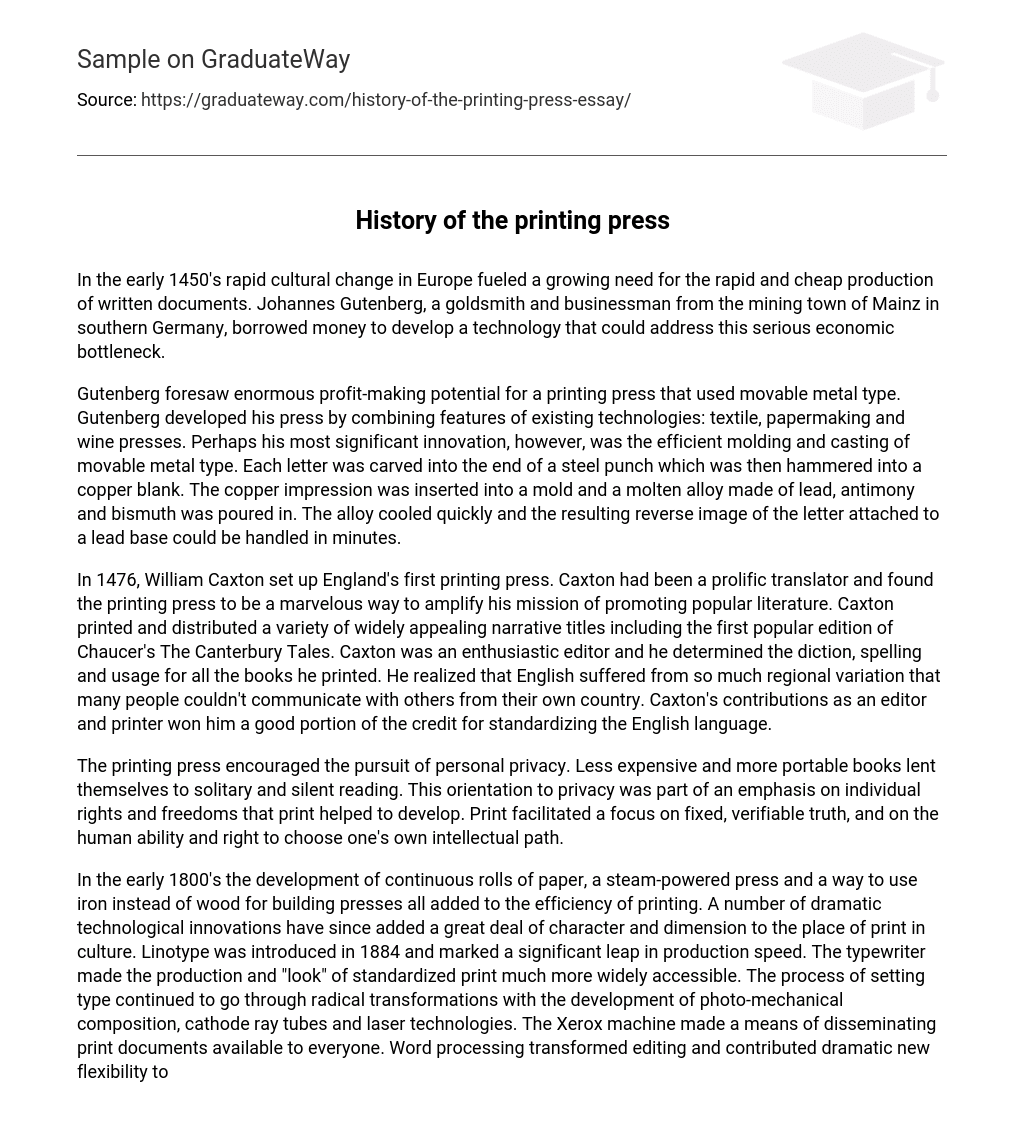During the early 1450’s, there was a growing demand for fast and affordable production of written documents due to rapid cultural change in Europe. Johannes Gutenberg, a goldsmith and businessman from Mainz, Germany, recognized this economic problem and borrowed money to develop a technology to address it.
Gutenberg envisioned the potential for great profits with the invention of a printing press that used movable metal type. He combined features from existing technologies, such as textile, papermaking, and wine presses, to create his own press. One of his most important innovations was the efficient process of molding and casting movable metal type. The letter designs were carved onto steel punches, which were then struck into copper blanks. These copper impressions were placed into molds and filled with a molten alloy made of lead, antimony, and bismuth. The alloy quickly cooled, resulting in a reverse image of the letter attached to a lead base, which could be handled within minutes.
In 1476, William Caxton established the first printing press in England. He was a renowned translator and saw the printing press as an excellent tool to advance his mission of promoting accessible literature. Among his many publications was the first popular version of Chaucer’s The Canterbury Tales. Caxton was an enthusiastic editor who took charge of the language, spelling, and wording in all of his books. He recognized that English had so many regional differences that it hindered communication among its own speakers. Caxton’s role as an editor and printer played a significant part in standardizing the English language.
The advent of the printing press prompted a desire for personal privacy as it allowed for more affordable and easily transportable books, fostering an environment for solitary and silent reading. This inclination towards privacy was a result of the growing importance placed on individual rights and freedoms that print technology assisted in cultivating. Additionally, print enabled a concentration on established and evidential truths, as well as the human capacity and entitlement to select one’s own intellectual journey.
In the early 1800’s, advancements in printing technology such as continuous rolls of paper, steam-powered presses, and the use of iron instead of wood for building presses, greatly improved printing efficiency. Throughout history, various technological innovations have further enhanced the role of print in culture. The introduction of Linotype in 1884 revolutionized production speed. The typewriter made standardized print more accessible to a wider audience. The development of photo-mechanical composition, cathode ray tubes, and laser technologies resulted in radical transformations in the process of setting type. The Xerox machine made print documents widely available. Word processing brought new flexibility to the writing process and transformed editing. Computer printing has also undergone several stages of innovation, from early impact printers like daisy-wheel and dot matrix, to the now commonly used non-impact printers such as ink-jet, laser, and thermal-transfer.
Both the Internet and interactive multimedia have expanded the ways in which the printed word can be used in culture. Now, the printed word enables real-time social interaction and personalized navigation through interactive documents. It is challenging to assess the social and cultural effects of new media without the perspective of history, but these advancements are likely to indicate a significant transformation in human communication’s use, influence, and nature.





